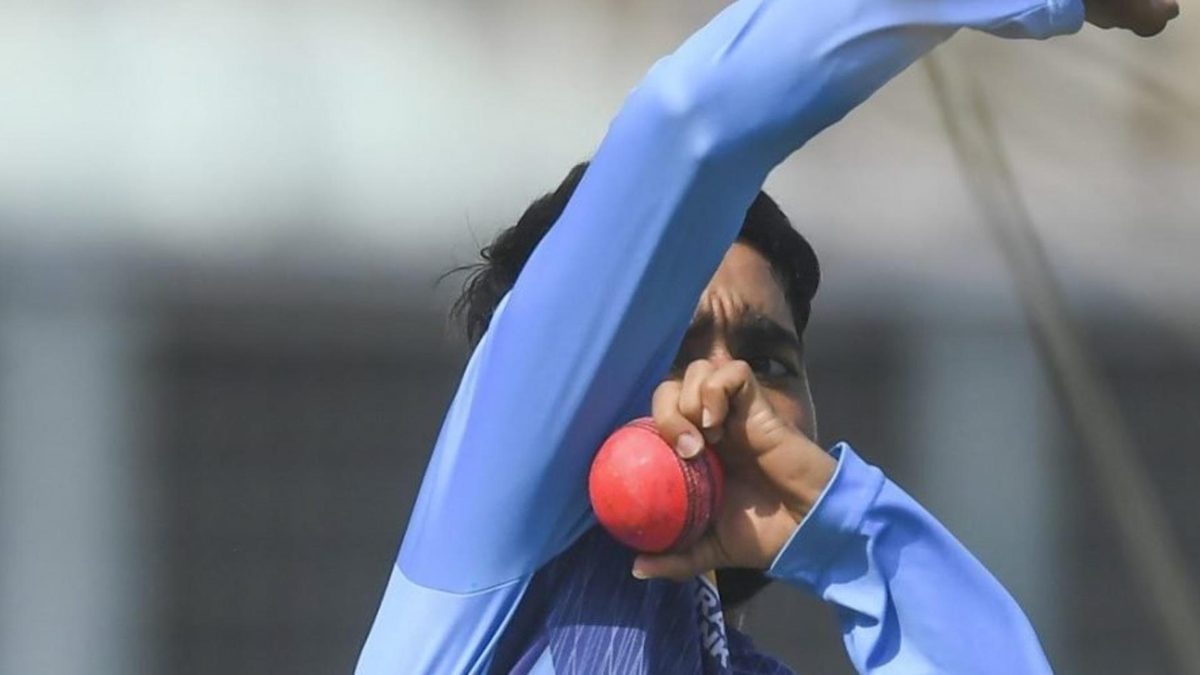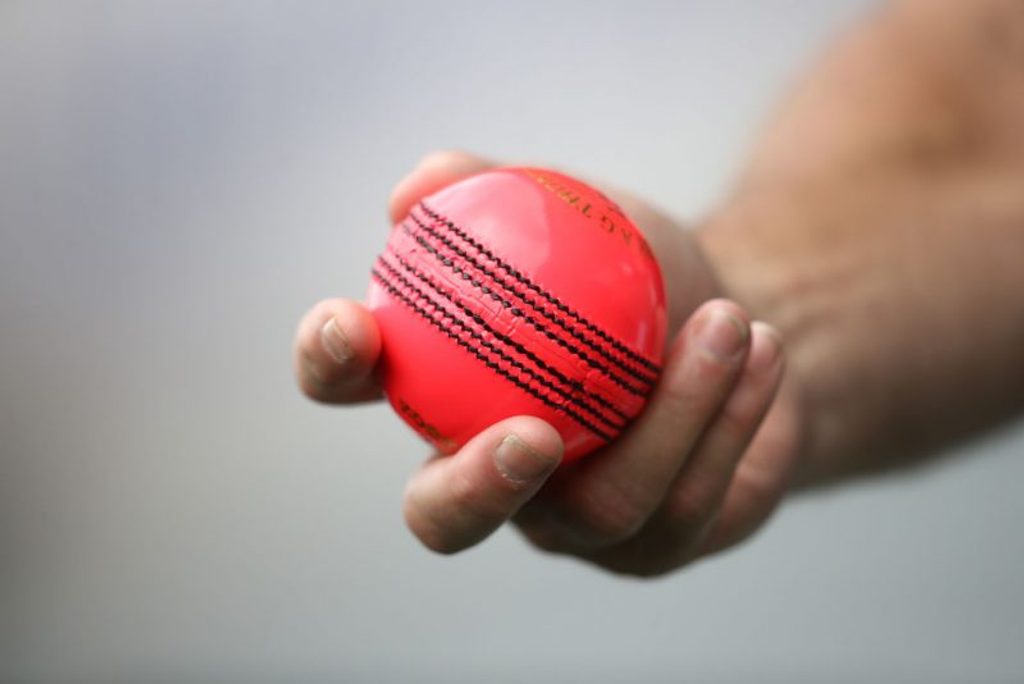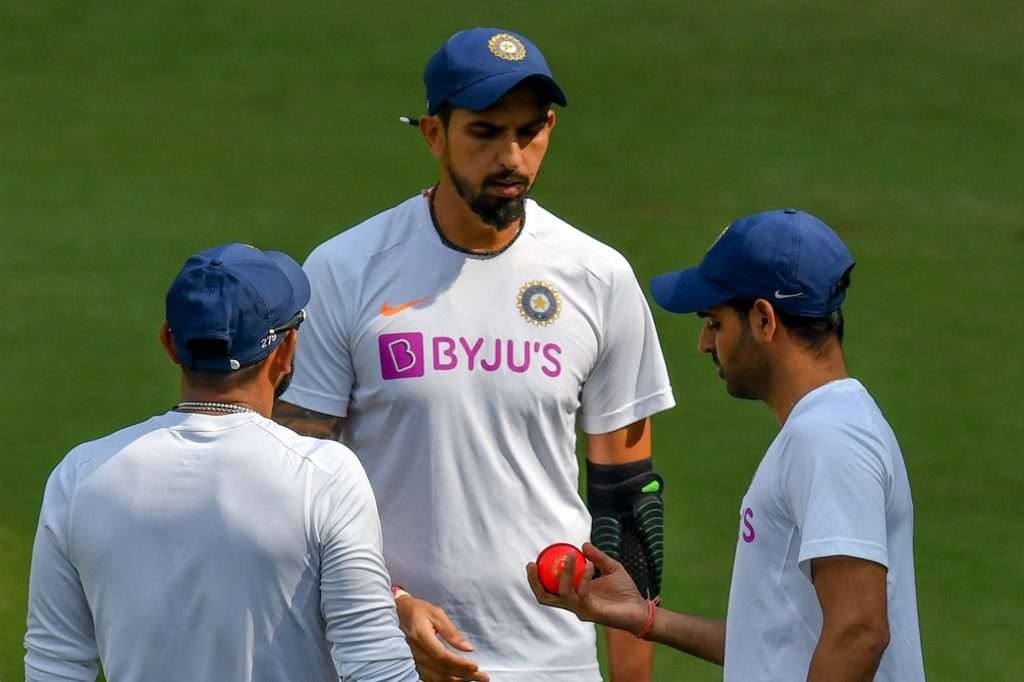
A giant pink balloon is hanging over Eden Gardens, the stadium is festooned in new pink lights, the city of Kolkata has been painted pink and mascots Pinku and Tinku are ready for the historic day-night Test between India and Bangladesh. But what of the pink ball itself?
There is much that is unknown about the pink SG ball that will be used for the first-ever day-night Test in India starting Friday, November 22. The pink ball, in general, has sparked a few concerns and come in for some criticism: that it loses colour too soon, that it gets scuffed up easily, and that it even appears orange.
We got in touch with Paras Anand, the marketing director of SG, who will supply the balls for the Test, and put these concerns to him. He remained confident that the ball would hold up. At the same time, he stressed that this was still “an experiment”, a first for everyone from the curators and groundsmen, to the ball manufacturers, and to the players themselves. Here’s what he said:
How is the pink ball different from the red?
Time to gear up for the Pink! #TeamIndia begin prep under lights in Indore for the Kolkata Test #INDvBAN pic.twitter.com/MVzkaVjdmL
— BCCI (@BCCI) November 17, 2019
There will be more swing [than the red ball] – that’s got to do with the way the pink colour is put on to the leather. There are more layers of coating. For example, if the red ball gets old between 15 and 20 overs, this might take 25 overs. Then the bowlers will start using the seam more, because once the polish is gone, it doesn’t swing as much.
[Wisden’s note: The pink ball has a black seam as compared to the white seam on the red ball. SG balls have hand-stitched seam, which makes it more prominent.]
The spinners will also come into play. With the pronounced seam, hopefully the spinners can get that extra bit of revolution by gripping it. If the fast bowlers are not able to get breakthroughs, the spinners might come into play.
What are the potential problems?
 The SG pink ball will have different properties to the Dukes and the Kookaburra
The SG pink ball will have different properties to the Dukes and the Kookaburra
The main problem will be the dew. The ball will become slippery, and you won’t be able to get that grip. Hopefully, with the pronounced seam of our pink balls, it will help in gripping.
One important factor for ball is for it to retain colour for 80 overs – it’s dependant on not just the way the ball is made, but also the ground conditions, the dew factor, how much grass is there on wicket, how hard the surface is.
The game is starting from 1pm. So that means, the period with dew will be very short, probably the last 10 overs of the day. There is the possibility, however, that ball might get wet, and in the process lose some colour. If it gets scuffed up, then the damage with the water on top of it will have an impact on visibility.
However, in the worst-case scenario, they have a library [a collection of differently aged balls to replace match balls at any stage].
[Wisden’s note: It gets dark around 4pm local time in Kolkata at this time of the year. The Eden Gardens head groundsman has confirmed that he will leave more grass on the pitch than usual, to ensure that the ball retains its colour. The grass on the outfield has been trimmed. ‘Anti-dew’ spray has been used for the past three-four days.]
What were the BCCI’s instructions?
Getting ready for the Pink ball Test be like 😍😎 #TeamIndia #INDvBAN pic.twitter.com/BtwfEwFKwN
— BCCI (@BCCI) November 17, 2019
Two things were asked of us by the BCCI, on the back of feedback they received from other pink ball matches. They said they were concerned about the seam, and the hardness.
They [BCCI] wanted to maintain the edge India have. They wanted us to retain those two aspects [seam and hardness] of the red ball. Last week, when we supplied balls for the day-night Test, we ensured the seam in those balls was similar to those on the red balls. As for the hardness, the way it is prepared, the ball will remain hard for 70 overs, if not 80.
A lot of work has gone into it, a lot of feedback that we’ve got from the players and the BCCI has gone into producing this final product.
How is the SG pink ball different from Dukes/Kookabura?
Bangladesh team departing Indore for the second Test in Kolkata. pic.twitter.com/4gfUZZ7F0k
— Bangladesh Cricket (@BCBtigers) November 19, 2019
The difference in properties that we see between the red balls [from these manufacturers] will be replicated in the pink ones. The red SG ball is different from red Dukes, and the red Dukes is different from the red Kookaburra. Those same differences will be maintained in the pink versions.
The process of making the balls pink, getting the colour on it, would perhaps wary slightly – SG might be curing it in a different way. But overall the process is very similar.
As for the other properties, we know, historically, the Dukes has been a harder ball than the others. But now, even we’ve made our balls harder. And our seam is more pronounced, so the balls will last longer in the game.
The pink balls sometimes appear orange. Why?
The ball doesn’t change colour. It happens in that particular time of the day when the sun is setting, and the floodlights aren’t bright enough yet. It’s part of playing with the pink ball. It’s not that the colour of the ball has changed, it’s the lighting that has the impact. When we’re producing the ball, it looks different in white light, in yellow light, and when take it outside to the sunlight. It’s not the ball, it’s the light. That cannot be controlled.
How prepared were you with the pink ball tech?
 The pink ball is likely to generate more swing for the pacers, at least initially
The pink ball is likely to generate more swing for the pacers, at least initially
Before taking the decision [to make the second Test a day-night one], we got a call from BCCI. They asked, ‘Are you ready with the pink ball? Will you be able to supply it for the Test match?’ We were ready. We’d done quite a bit of work on it in the last couple of years.
We’ve been working on our pink ball technology since Australia [the inaugural pink-ball Test in 2015]. In 2016, we were approached by the BCCI, but we told them, it was a work in progress, and we were not in a position to supply it for the day-night Duleep Trophy. After that, we started our development process of the pink ball.
We’ve been very fortunate. The BCCI, ahead of this Test, just asked us: ‘Do you feel the ball is ready for the Test match?’ When we confirmed it was ready, they said, ‘good, just try to give your best’. They haven’t put a lot of pressure.








